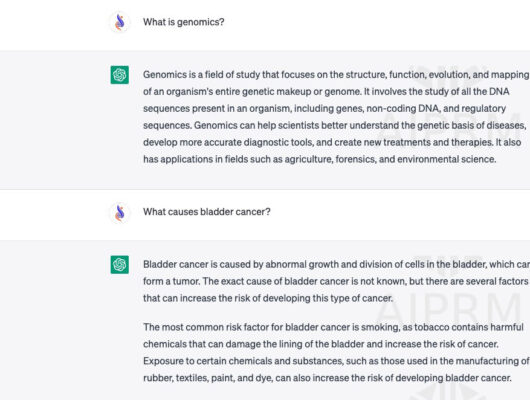In the ever-evolving landscape of the Life Sciences industry, your business needs an effective marketing strategy to stay ahead. This involves making critical decisions about whether to handle content creation in-house or hire an external agency. Both content production methods have their pros and cons.
This blog will guide you through deciding whether to work with an external agency or utilize your internal team to devise a content strategy tailored to your unique needs.
The Science Behind In-House Creativity
In-house content development in the Life Sciences industry means your content is created by people who live and breathe your brand daily. They are familiar with your company, customers, and products. Therefore, they can provide insights and nuances that an external agency might miss. This approach can offer more control over your growth trajectory, eliminate third-party dependencies, and empower cost-management strategies.
Nevertheless, in-house content creation presents some challenges. It demands a significant time and energy investment that might divert attention from other critical tasks, like marketing strategy and sales enablement. Moreover, internal teams lack the broad skill set required to produce diverse content formats.
Sustaining an in-house team is budget-dependent, making it a viable option for larger companies only.
Decoding The External Agency Advantage
Choosing an external agency in the Life Sciences sector provides a fresh perspective and industry expertise, lending clarity to your content. It enables a quick initiation and offers more options in terms of creativity and diversity.
However, it’s important to note some hurdles. Identifying an agency with the required expertise and Life Sciences knowledge can be daunting. Achieving the right balance between quantity and quality of content is a common challenge. Also, the communication flow might be less efficient due to the agency juggling multiple clients.
Finally, miscommunication could lead to incorrect messaging, negatively affecting brand reputation.
The DNA Of Outsourcing: Top 10 Factors To Consider
1. Financial Implications And Price Structure
When deciding between an in-house team and an external agency, one cannot overlook the financial implications and price structures involved. Maintaining an internal team is not just about salaries but also includes the costs of hiring, training, employee benefits, equipment, and overhead.
Life Sciences is a sector where staff needs continuous professional development, further inflating training costs. Moreover, consider the potential hidden costs associated with opportunity costs of time spent away from core business functions.
On the other hand, while the initial quote from an external agency might appear steep, it’s worth considering the value they bring. An external agency comes equipped with its own team of experts, advanced technology, software, and resources. They offer a bundled service that often turns out to be cost-effective in the long run, especially for specialized sectors like Life Sciences that require a combination of domain knowledge and creative skills.
2. Access To Advanced Tools And Technologies
The Life Sciences sector is characterized by rapid advancements and constant evolution. To create content that truly resonates with the target audience and stays ahead of the curve, access to current and relevant tools and technologies is crucial.
While an in-house team might be versed in generalist tools, an external agency specializes in this space, regularly updating its toolkit to stay competitive. They have the capability to leverage advanced analytics, content management systems, SEO tools, and multimedia technologies to create compelling, impactful content for the Life Sciences industry.
3. Timeline Management
Timeliness is crucial in any industry, but even more in the fast-paced Life Sciences sector, where being first-to-market can significantly impact success.
An in-house team might juggle multiple responsibilities, leading to potential delays in content delivery. On the contrary, an external agency, with a larger pool of dedicated resources, can often deliver work within tight deadlines. Moreover, their experience across multiple clients allows them to better manage workloads and ensure timely completion of tasks.
4. Supervisory Needs
Managing an in-house team requires constant supervision, performance tracking, and motivation, tying up valuable internal resources. In the Life Sciences industry, where every moment counts, this added supervisory burden can divert focus from core business functions.
On the other hand, an external agency functions as an independent unit, requiring minimal supervision. They are responsible for managing their team, resolving bottlenecks, and ensuring smooth execution. This independence allows your internal resources to stay focused on their prime responsibilities, adding to your business’s efficiency and effectiveness.
5. Liability Limitations
The realm of liability and risk management is a crucial aspect that weighs heavily in the internal team versus external agency debate. The responsibility for any content errors, compliance issues, or potential legal troubles typically lies with the content creator.
In an in-house setup, this means that your business is directly exposed to these risks. In the Life Sciences industry, where content often includes sensitive medical or scientific information, any misinformation can have severe consequences, leading to substantial reputational damage and potential legal liabilities.
By contrast, when working with an external agency, the responsibility for content accuracy and compliance largely shifts to them. They are accountable for delivering content that aligns with industry regulations and standards, and should issues arise, they are generally responsible for rectifying them. This shift doesn’t eliminate all risks but can substantially mitigate your company’s direct exposure to potential content-related problems.
However, to truly leverage this advantage, it’s crucial to clearly establish the scope of the agency’s responsibilities and liabilities in your contract. This includes setting out responsibilities for fact-checking, adherence to regulatory standards, intellectual property rights, indemnities, and what happens in case of a breach of these duties.
6. Credibility Check
The credibility and reputation of an external agency are paramount. You need to assess their past work, experience, and client testimonials to evaluate their trustworthiness. Be it a creative agency or any other type of agency, make sure they have relevant experience in the Life Sciences industry. Talking to their current and former clients can provide valuable insights into their processes, work ethic, and reliability.
Keep in mind, a big idea or attractive pricing alone shouldn’t be the deciding factor. A deep dive into their practices, team skills, and agency relationships with clients will enable you to make the smartest decision for your business. Be wary of agencies that over-promise but may not have the resources to deliver.
7. Setting Clear Expectations

Working with an external agency requires clarity in communication and setting clear expectations. This is best achieved through a detailed Service Level Agreement (SLA) that outlines the scope of work, deadlines, deliverables, payment terms, and other operational details.
In the SLA, define the specific tasks the agency will perform, along with measurable objectives and performance indicators. For example, in the Life Sciences industry, this might include creating a specific number of blog posts per month, achieving a particular SEO ranking, or driving a certain level of website traffic.
Next, establish a realistic timeline, keeping in mind key industry events or product launches. External agencies work with multiple clients, so setting clear deadlines ensures your work remains a priority.
In terms of deliverables, specify the formats, styles, and any industry-specific requirements. In the Life Sciences sector, this might include strict compliance with scientific accuracy or medical regulatory standards.
Payment terms should be transparent, detailing when and how payments will be made, any retainers or upfront costs, and the process for extra charges, if any.
The SLA should also cover contingencies, like what happens if deadlines are missed, work is subpar, or if either party wants to terminate the contract. This will help avoid conflicts and ensure a smooth, productive working relationship.
Remember, the SLA is not a one-off document but should be revisited and revised as your business needs evolve. It serves as the foundation of your relationship with the agency, ensuring mutual understanding and alignment toward shared goals.
8. Leadership Determination
An external agency usually assigns a project manager to lead the content development process. This person is a liaison between the agency and your company, ensuring smooth communication and efficient project execution. The creative director from the agency will often collaborate closely with your team, bringing in new perspectives and insights that can enhance the content.
For an in-house team, someone from your business must take up this responsibility. This person will manage the process, delegate tasks, and ensure the final output aligns with your business goals and target audience expectations. It’s a role that requires a combination of managerial prowess, creativity, and a deep understanding of your brand and customers.
9. Importance Of Interactions
The communication lines between internal and external teams are crucial for the successful implementation of any project. Regular meetings and check-ins ensure everyone is on the same page and that the project is moving in the right direction.
When working with external resources like a creative agency, you might need to schedule more formal and structured interactions, especially if dealing with different time zones. With an in-house agency, interactions can be more flexible, allowing for quick resolutions and adaptations.
10. Successful Business Growth Strategies
When it comes to growth, many businesses turn to external agencies to complement their in-house efforts. But the key to successful growth lies in creating a clear outsourcing plan. This involves understanding its objective, comparing quotations from different providers, establishing touchpoints, setting and meeting deadlines, reviewing contracts, and regularly assessing the work.
An agency partner who understands your industry and business objectives can bring real value and the most benefit. So, it’s crucial to find an agency that respects your vision, offers greater objectivity, and provides services that align with your brand’s goals. You should evaluate your agency relationship regularly to ensure it still makes sense for your business.
Ultimately, the decision to hire an external agency or rely on your in-house team should align with your strategic objectives, budget considerations, internal capacities, and the specific demands of the Life Sciences industry. Whichever path you choose, the ultimate goal should be to develop a content strategy that brings your brand to its full potential, appeals to your target audience, and bolsters your market position.
Making The Smartest Decision For Your Business
Choosing between an in-house team and an external agency is no easy task. It’s a multifaceted decision that involves thorough analysis and careful consideration. While it’s tempting to lean towards the option that seems most cost-effective, the best decision for your business will account for more than just financials.
Consider the nature of your business in the Life Sciences industry. Do you regularly need specialized content, or is it a one-off requirement? If your content needs are consistent and require niche expertise, having an internal team might prove beneficial. On the other hand, if your content requirements fluctuate or if you need a variety of content types, an external agency with a diverse team could be a better fit.
Evaluate your existing resources. Do you have the workforce to manage content creation effectively? If not, can you afford to hire and train new employees? If you’re already stretched thin, an agency can provide relief and ensure content creation doesn’t falter during peak business times.
Another vital aspect is your future goals. If you’re looking to expand your business or break into new areas within the Life Sciences industry, an agency can bring fresh perspectives and innovative ideas to align with your growth strategies.
Finally, consider your risk tolerance. If you’re wary of potential liability issues and are looking for ways to mitigate them, an external agency offers a layer of protection. However, remember that this doesn’t absolve you of all risks, so choose an agency that is trustworthy and experienced in dealing with Life Sciences content.
Choosing between an internal team and an external agency ultimately comes down to understanding your business’s unique needs, resources, and goals. By considering each factor, you can make a well-informed decision that aligns with your brand’s best interests.
Final Thoughts And Stepping Forward
Navigating the Life Sciences industry’s complex content creation maze can feel overwhelming, whether you are weighing the pros and cons of an internal team or considering outsourcing to an external agency. Each method has its unique advantages and challenges, and your choice should align with your organization’s unique needs, resources, and long-term objectives.
At Sciencia Consulting, we understand the nuanced demands of the Life Sciences sector. Our digital marketing services are designed to deliver results by leveraging our industry-specific knowledge, coupled with the versatility and broad expertise that only an external agency can provide. Whether you’re a startup needing a full-service marketing solution or an established organization looking to supplement your in-house team’s efforts, Sciencia Consulting is here to help.
Ready to navigate the world of Life Sciences marketing with more confidence and less stress? Reach out to us today for a free consultation to discuss how we can tailor a solution to your unique needs and empower your organization to reach its full potential.
You might also enjoy:








